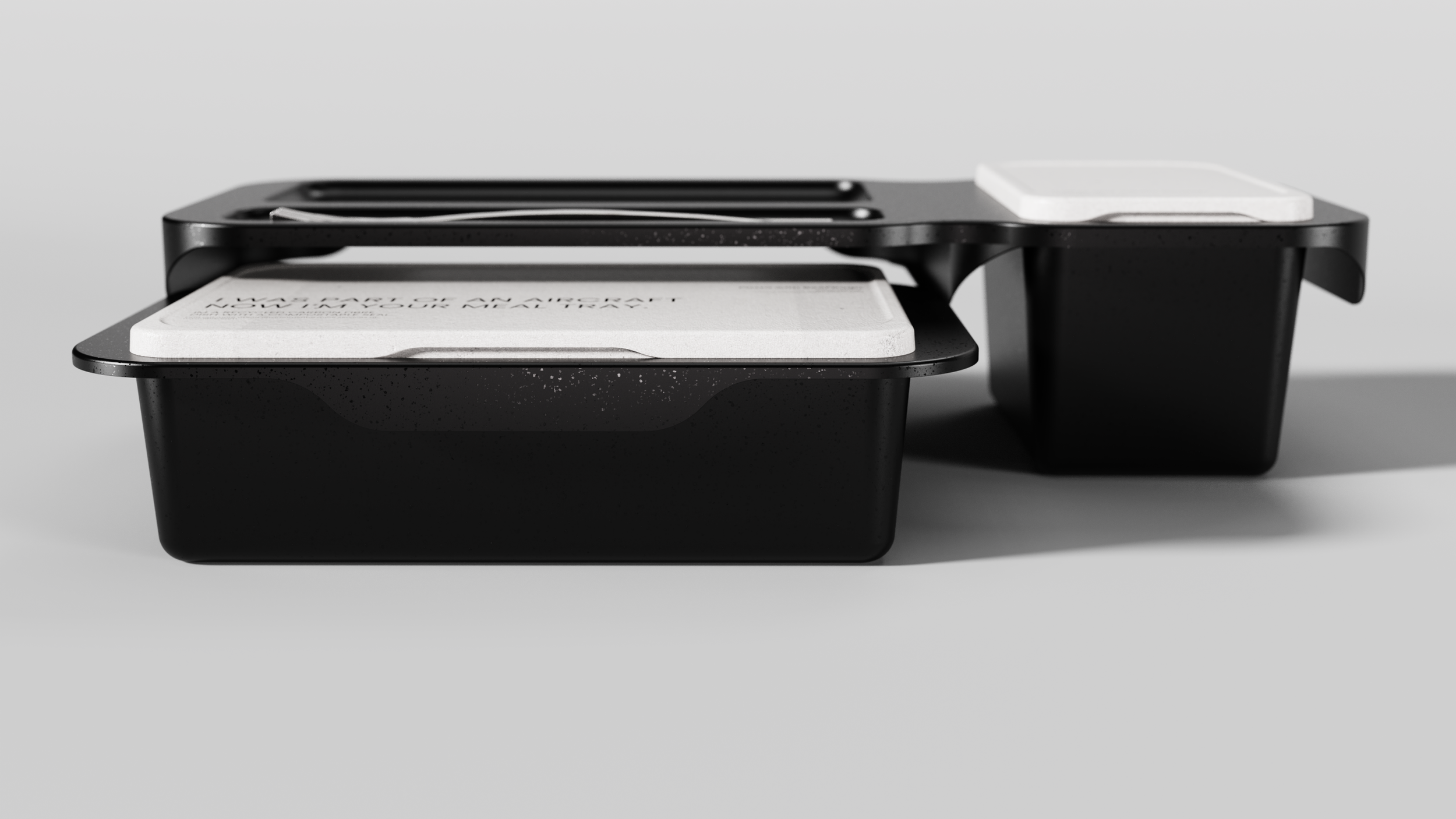
FIBRE
A low emission meal tray that improves customer experience.
FIBRE proposes an environmentally sound catering package in line with international regulations which is achieved by combining lightweight reusable recycled Carbon Fibre dishes with compostable packaging and an online meal pre-booking service.
Airline Packaging

Discover
Extensive research of literature and current global trends revealed the extent of the cabin waste generated from commercial flights
Catering Waste
60.2% of medium to long haul flight waste comes from food and food packaging.
Food Waste
11.5% of which is untouched food.
14.4% of waste is catering packaging which has a high content of contaminated plastic and aluminium packaging. Including 32.5% Aluminium, 17.5% PP and 38% various other plastics. (Blanca-Alcubilla, et al, 2019)
Packaging
Incineration
Worldwide regulations require food and packaging waste from most international flights to be incinerated.
Immerse
A deep dive into the user experience world of airline catering yielded observations about human behaviours and future issue. This was achieved using a range of primary and secondary research techniques and trend analysis. A key challenge faced in this project was finding a material that would provide an environmental benefit at all stages of it’s life cycle whilst adhering to strict regulations.
The research uncovered a problem that is yet to be fully realised:
Unlike existing commercial aircraft that are predominantly constructed from metals like Aluminium, new aircraft are making exstensive use of composite materials. 53% of the newest next generation airctraft, the Airbus A350 is constructed from Carbon Fibre
New research into recycling processes has led to the development of recycled Carbon Fibre, a material suitable for creating extremely lightweight components for non-critical applications, like meal trays. This advancement addresses concerns about the growing waste from Carbon Fibre, especially as next-generation aircraft approach retirement. Without effective intervention, aircraft recycling rates could fall from 97% to below 50%.
Create
Using environmental design strategies and innovation in materials a range of different design directions were explored to rethink the physical products used in aviation catering and encourage a change in consumer behaivour for a more sustainable in-flight experience.
Concepts were generated in order to consider a large amount of possible designs within the specified design direction. A number of different forms and textures were also generated, informed by the design language mood board and AI tools.
Refine
Concepts were brought to life through Sketches, CAD and prototyping with recycled Carbon Fibre and other supporting materials.
To analyse the prototypes, I conducted two types of studies: First, industry experts reviewed them, building on their input from the market analysis stage. Second, frequent flyers tested the prototypes to identify the best direction for development.
The studies provided solid insight into the desired form semantics of the project and crucially, insight into the key design consideration of cutting down the space a meal tray takes up.
Analyse
The suggested solutions usability was analysed by industry experts and frequent flyers whilst the environmental performance was analysed against airline catering data.
By removing the need for a traditional meal tray, the meal package is shown to dramatically reduce trolley space requirements and decrease weight thereby improving flight fuel efficiency and financial savings for airlines.
The reduction in size of the meal package and removal of the typical large tray offers passengers more space on the seat back table improving the catering experience.
The pre-booking service allows users to choose their meal (or choose not to eat) before their flight. This allows the accurate loading of meals, reducing weight and saving fuel. Pre-booking is also shown to improve the passenger experience.
Deliver
The design was further refined to enhance the aesthetics and usability of the product.
The product is split into two parts, the top tray section and the hot course container. These can be loaded onto the aircraft in separate meal trolleys then combined at point of delivery to increase service efficiency. The top tray can be supplied as a 2-course or 3-course variant with space for cutlery, one or two sealed course containers and space for bread or other snack offerings. The hot course tray slides in under the top tray to complete the set. All food is sealed via a compostable paper pulp lid.



















